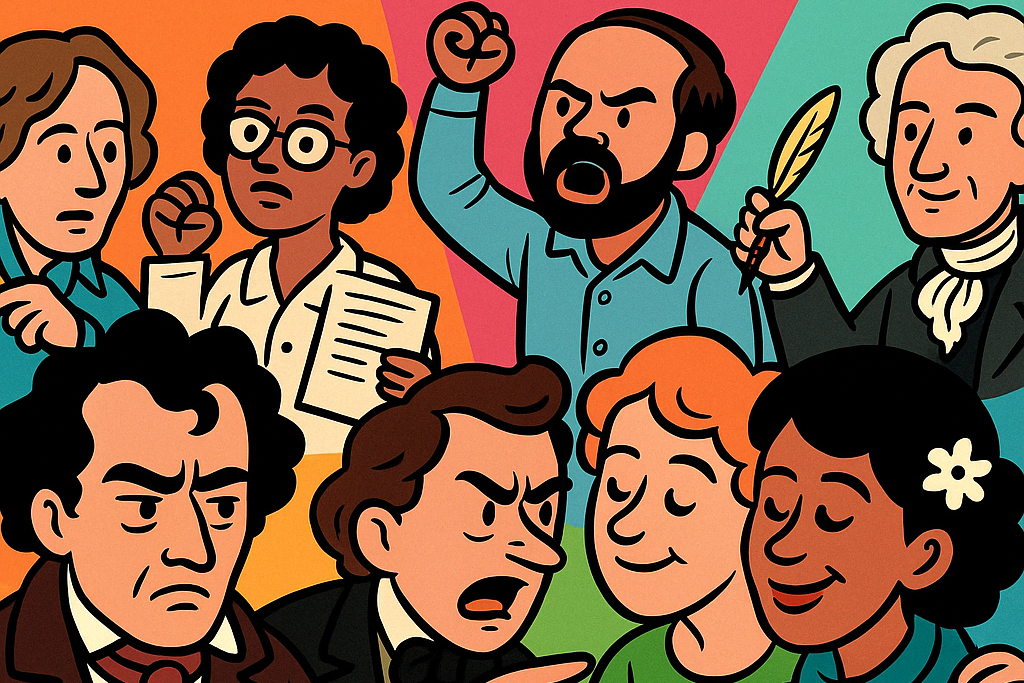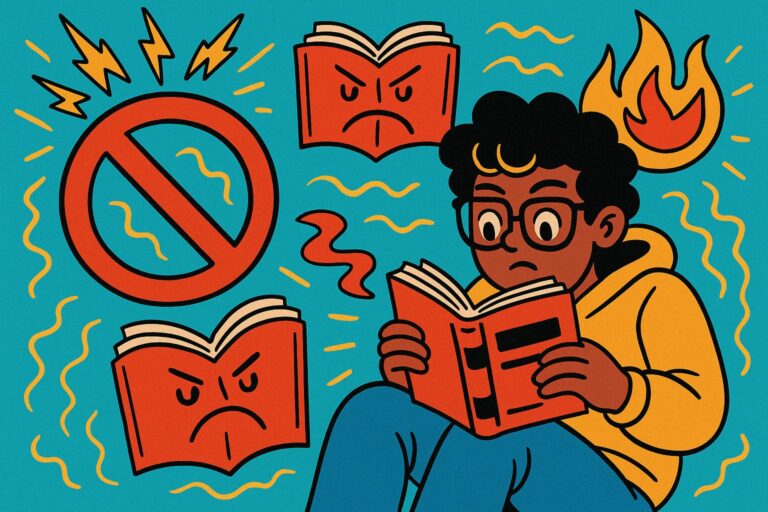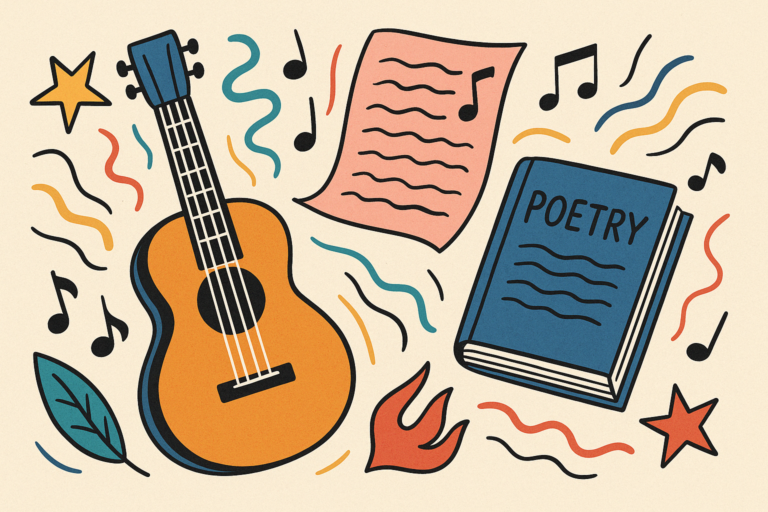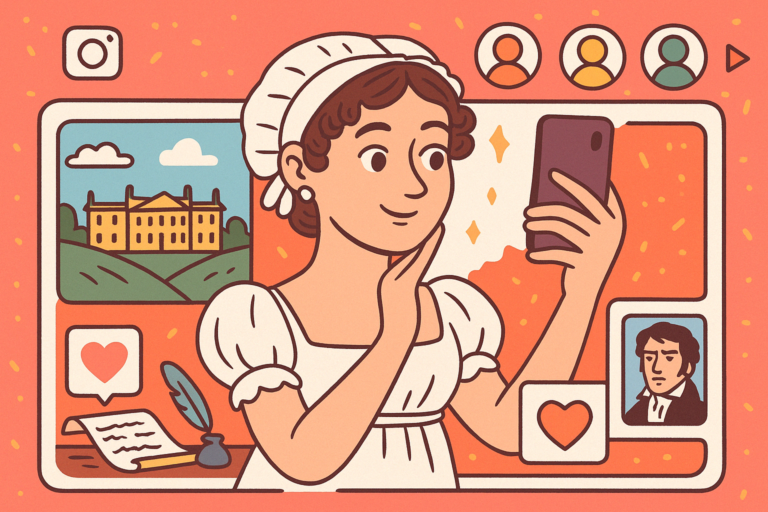Legendary Feuds And Friendships Between Famous Poets

When we think of poets, it’s easy to picture them as isolated geniuses—scribbling deep thoughts in notebooks by candlelight, detached from the world.
But honestly, once I started digging into the actual relationships between famous poets, I realized just how much their creative lives were tangled up in friendship, rivalry, admiration, and even straight-up beef.
These weren’t just literary acquaintances—they shaped each other’s work in very real ways. Some edited each other’s drafts, others clashed over politics or poetics, and a few just couldn’t stand the sight of each other.
Poetry, it turns out, is incredibly social—sometimes beautifully, sometimes bitterly so.
What makes this topic fascinating is that the lines between collaboration and conflict often blur.
It’s not just about who liked who; it’s about how those dynamics shaped the canon, for better or worse. So let’s get into the mess—and the brilliance—that came out of these legendary feuds.
Famous Feuds That Got Personal (and Sometimes Petty)
One of the first things I realized while researching this topic is that poetic feuds rarely stay on the page. These weren’t just intellectual disagreements—they were emotional, personal, and often deeply revealing of what each poet believed poetry should be. And I don’t mean in an abstract way. These fights got real.
Let’s start with one that seems like a friendship at first: Ezra Pound and T.S. Eliot. Pound famously edited The Waste Land, and not just a few commas here and there—he cut whole sections, restructured it, and essentially helped shape the version we all read today. Eliot even dedicated the poem to him as “il miglior fabbro” (the better craftsman).
But here’s the tension: Pound’s aggressive editorial style and Eliot’s own fastidious revisions created this strange dynamic where Eliot’s most iconic work was heavily mediated by someone else.
Was it collaboration or dominance?
Experts have debated this for years. What’s undeniable is that this partnership shifted modernist poetry—and not always comfortably.
Then there’s the classic feud: Edgar Allan Poe vs. Henry Wadsworth Longfellow. Poe accused Longfellow of “the heresy of the didactic,” basically saying his poetry was preachy and lacked artistic integrity.
He also claimed Longfellow plagiarized (a claim that didn’t hold up), but Poe was relentless. It wasn’t just about style—it was about who got to define American poetry in the 19th century. Poe wanted darker, moodier, more psychological verse, while Longfellow was, well, the people’s poet.
What’s wild is that Poe’s attacks came while Longfellow was far more popular, which makes it feel like a David-and-Goliath intellectual smackdown.
Another spicy one? Lord Byron vs. Robert Southey. Byron hated Southey—called him “a rancorous renegado”—and mocked his poem Vision of Judgment with a parody of the same name. Southey was the Poet Laureate and a political conservative, while Byron was the scandalous liberal.
Their feud wasn’t just literary—it was laced with political venom. Byron’s satire wasn’t subtle, either. He torched Southey’s style and reputation in one go, showing how poetry was being used as a political weapon in the early 1800s.
And while not exactly a personal feud, Amiri Baraka’s clashes with the literary establishment are worth mentioning. Baraka didn’t feud with just one poet—he challenged an entire system. His work openly called out the white-dominated institutions of American literature.
He once said, “Poems are bullshit unless they are teeth or trees.” That kind of statement wasn’t just poetic—it was a provocation. Baraka’s refusal to play nice with institutions he saw as complicit in racism created rifts that still feel raw in contemporary literary discussions.
What makes this even more compelling is how Baraka’s poetry itself reflects his antagonism, becoming more charged and confrontational over time.
What connects all of these feuds isn’t just the drama (though that’s fun, too)—it’s how each one reflects a deeper battle over what poetry is supposed to do.
Should it soothe or provoke?
Should it serve the elite or the people? Should it be beautiful or truthful?
Turns out, asking those questions can make even the most eloquent poets come out swinging.
Friendships That Forged Movements
Some of the most influential poetic movements weren’t just born out of ideology or craft—they came from real, human connections. Friendships between poets have shaped the direction of entire generations of writing, and in a few cases, defined the voice of a cultural moment.
These friendships weren’t always easy, but they were often transformative. Here are five pairings where the bond between two poets became a creative force of its own.
1. William Wordsworth & Samuel Taylor Coleridge
It’s hard to overstate how vital this friendship was to the rise of English Romanticism. When Wordsworth and Coleridge teamed up to publish Lyrical Ballads in 1798, they weren’t just putting out a book—they were challenging the whole poetic establishment.
They both wanted to move away from rigid classical forms and toward something more emotionally honest and rooted in nature. Wordsworth’s preface to the 1800 edition is basically the Romantic manifesto, talking about “the spontaneous overflow of powerful feelings.”
But Coleridge wasn’t just along for the ride—he brought a more mystical, imaginative element to the table. His contributions like The Rime of the Ancient Mariner and Christabel gave the collection a darker, more supernatural flavor.
Eventually, their friendship soured—mostly over philosophical and personal differences (Coleridge’s opium addiction didn’t help)—but their early synergy fundamentally reshaped what poetry could be.
2. Sylvia Plath & Anne Sexton
This one is haunting and deeply intimate. Plath and Sexton met in a poetry workshop led by Robert Lowell, but their real bond came afterward, during late-night conversations over martinis and shared trauma. They talked about death, depression, ambition—stuff that most people couldn’t touch, but that they turned into raw, groundbreaking poetry.
What’s fascinating is that they weren’t competing—they were unlocking something in each other. Both became central figures in the Confessional poetry movement, and while their styles differ (Plath’s imagery is tighter and more controlled, Sexton’s more sprawling and jagged), you can feel the echo of their influence in each other’s work.
After Plath’s suicide, Sexton actually wrote a play imagining Plath in the afterlife. It’s a little eerie, yeah—but it speaks to how deeply Plath had embedded herself in Sexton’s psyche. Their friendship was brief, intense, and posthumously mythologized, but it left a permanent mark on 20th-century poetry.
3. Allen Ginsberg & Jack Kerouac
You probably know them as Beats, but what struck me while researching was just how much their bond was rooted in mutual awe.
Ginsberg once said Kerouac had a genius for language that was “like hearing the soul speak.” And Kerouac, in turn, was captivated by Ginsberg’s open-hearted, lyrical vision.
They pushed each other toward spiritual and artistic extremes. Ginsberg’s Howl wouldn’t have existed without Kerouac’s improvisational prose style (think On the Road), and Kerouac’s spontaneous “bop prosody” was shaped by the same poetic energy Ginsberg was exploring.
This friendship wasn’t always smooth—there were tensions around fame, drugs, and politics—but the dialogue between their work is unmistakable. They weren’t just friends; they were each other’s poetic tuning forks, helping define the Beat aesthetic that still echoes today.
4. Langston Hughes & Zora Neale Hurston
Okay, yes—this one ended in a fight, but before things got ugly, Hughes and Hurston were the Harlem Renaissance’s dream team. They met in 1925 and hit it off instantly, bonding over their Southern roots and their passion for preserving Black folk culture through art.
Together, they worked on a play called Mule Bone, which was supposed to showcase African-American vernacular in a way that respected its richness and complexity. Unfortunately, a copyright dispute turned the whole thing sour, and they never reconciled.
Still, the early part of their relationship laid the groundwork for a more expansive Black literary voice. Hughes’s poetry and Hurston’s anthropological work both reflected the vibrant everyday life of Black Americans—not just the “uplift” narratives that were expected at the time.
Even though it ended badly, the creative energy they sparked together helped broaden the range of Black expression in American literature.
5. Elizabeth Bishop & Robert Lowell
This might be my favorite, just because it’s so emotionally subtle. Bishop and Lowell weren’t close in the usual sense—they didn’t live near each other or talk every day—but they had a decades-long correspondence that was, honestly, kind of beautiful.
Their letters are full of critique, admiration, vulnerability. Lowell once said that Bishop’s poetry was “unforgettable,” and she returned the compliment—while also calling out his more confessional tendencies. She didn’t always agree with his artistic choices, but she respected them deeply.
What’s really cool is how their work contrasts: Bishop’s precision and restraint vs. Lowell’s emotional intensity. But that contrast is what made their friendship so creatively productive. You can actually see them subtly adjusting their styles over time, influenced by the other’s strengths.
They never had a big falling-out, which is rare. Just two poets writing, reading, and making each other better, year after year.
It Was Never Just About the Poems
If there’s one thing I hope this piece makes clear, it’s that poetry has always been more than just solitary genius. These poets were part of a conversation—sometimes loving, sometimes furious—that shaped what poetry is today.
Whether through fierce feuds, creative friendships, or everything in between, their relationships left fingerprints on each other’s work and pushed boundaries in ways they never could have alone.
Turns out, behind every great poet is… another poet they couldn’t ignore.





